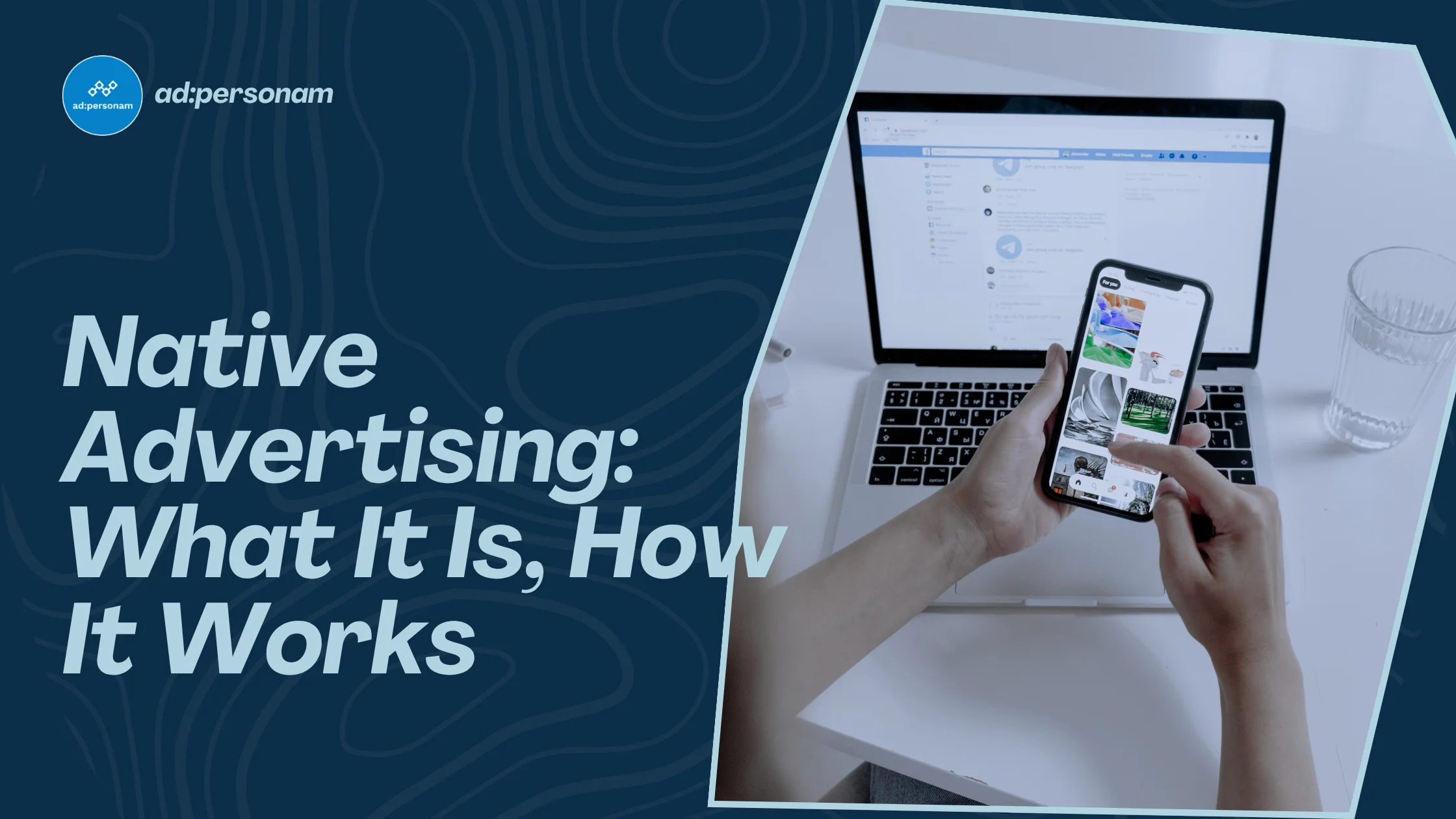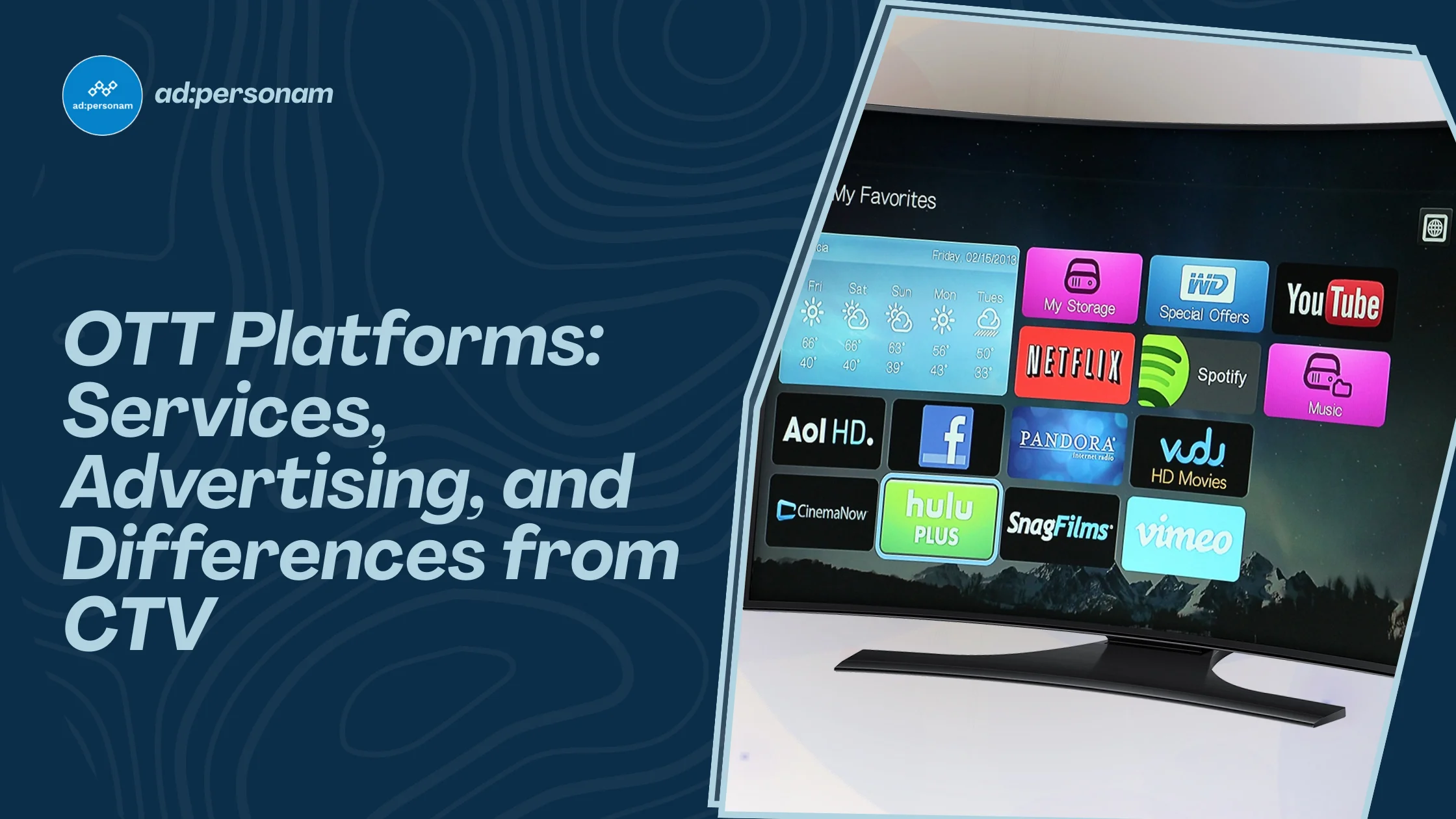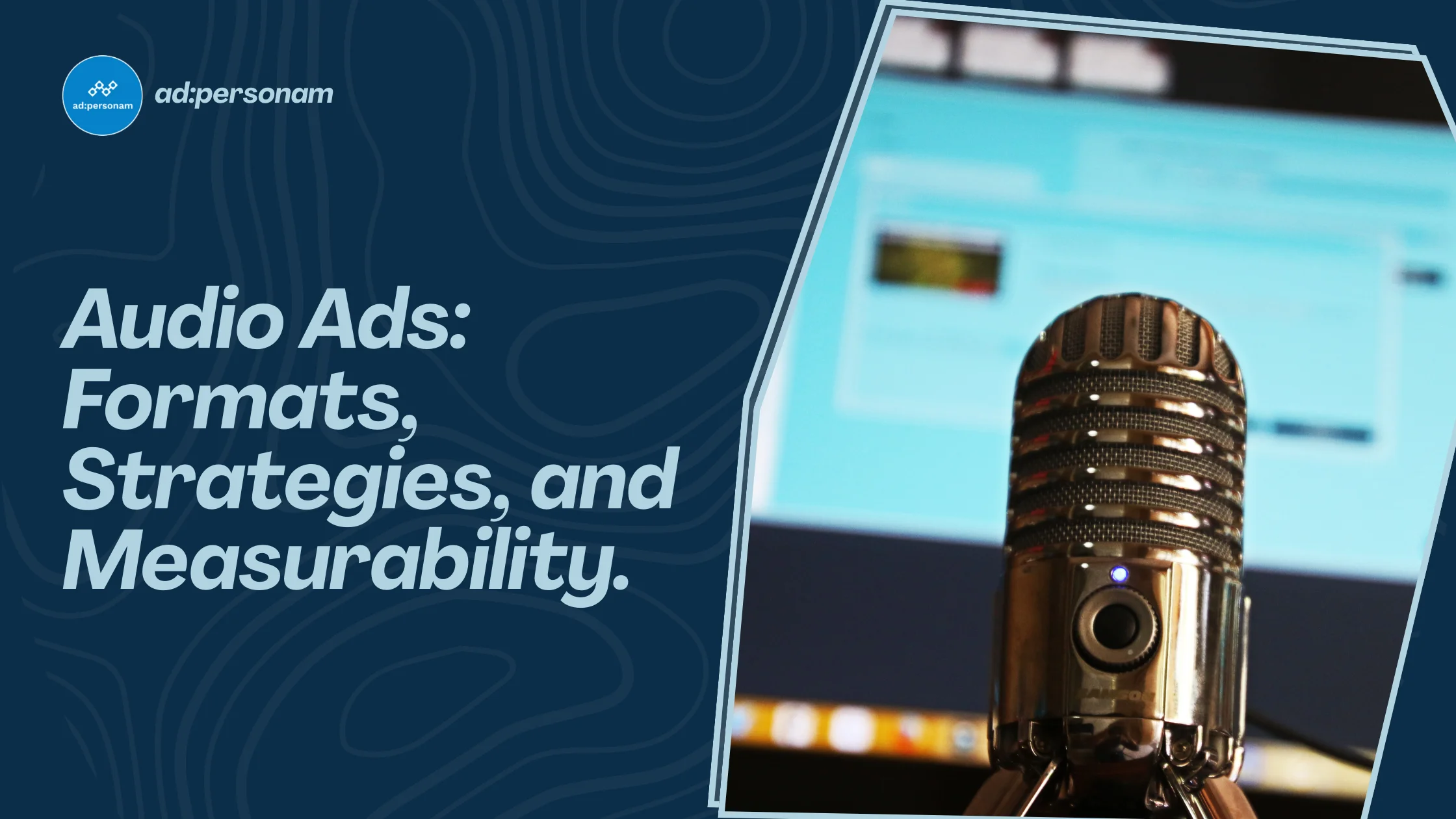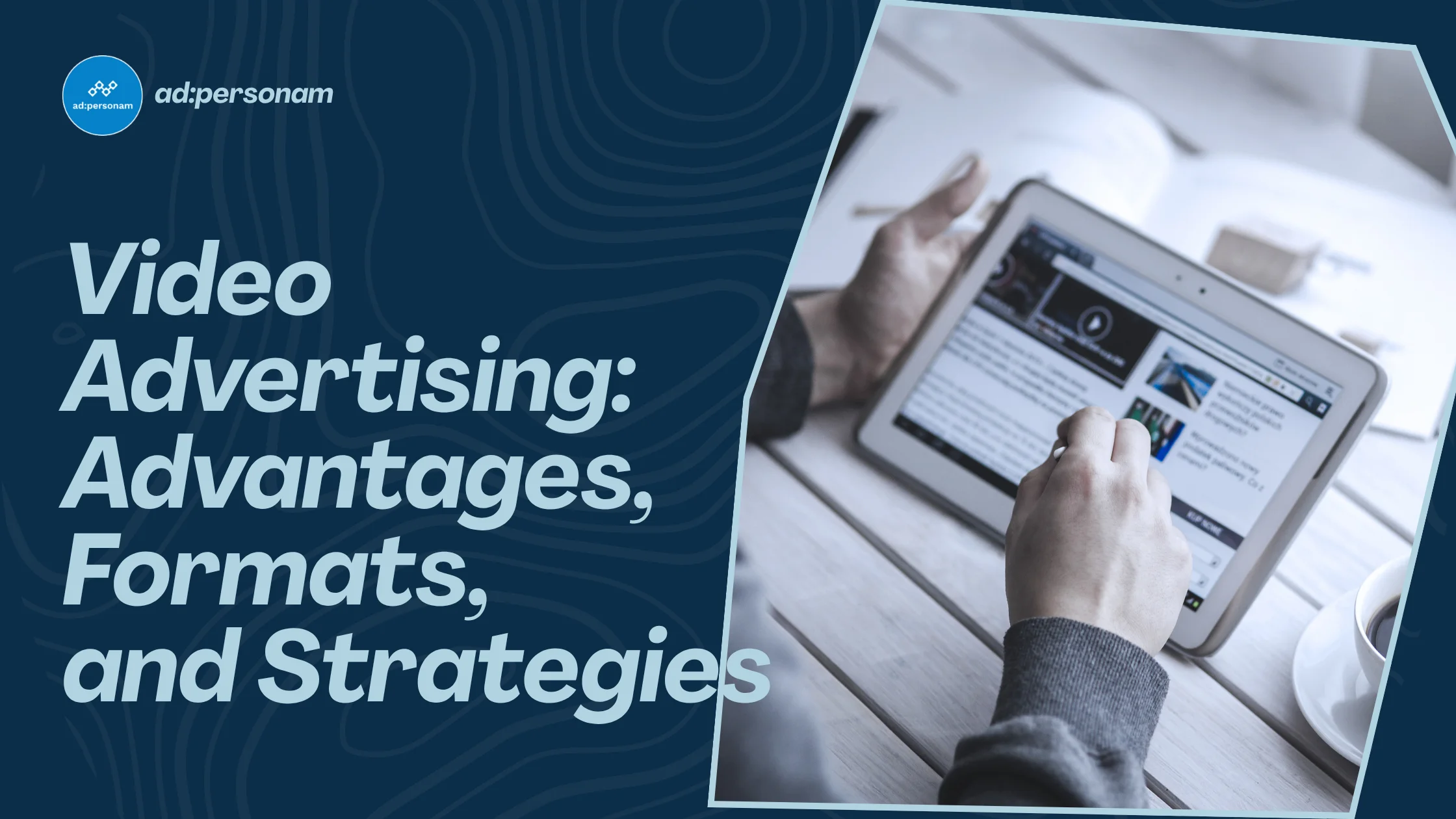Native Advertising: What It Is, How It Works and How to Integrate It Into Your Campaigns
Discover the advantages of native advertising, which strategies are best suited to improve your advertising campaigns and how to manage them with ad:personam DSP.
Contents
- Native Advertising: What It Is and How It Works
- Main Native Advertising Formats
- What's the Difference Between Native Advertising and Display Advertising
- Advantages of Native Advertising for Companies
- Risks of Native Advertising for Users
- Practical Examples of Native Advertising
- Native Advertising on ad:personam
- Frequently Asked Questions About Native Advertising and ad:personam

Native advertising is gaining more and more ground in digital marketing thanks to its ability to communicate with users in a spontaneous and non-invasive way. In this article, you'll discover how to integrate it into your campaigns, what the most effective formats are, the differences compared to traditional advertising, and how DSP platforms like ad:personam make managing native ads simple, automated, and high-performing.
Native Advertising: What It Is and How It Works
Native advertising is a form of native publicity that stands out because it adapts perfectly to the context in which it's published. Unlike traditional display ads, which often interrupt content consumption, native ads mimic the form and function of the hosting environment in every way. This means that a native ad will appear, for example, as a normal article on a news site or as a post on a social network, respecting its style, tone, and layout.
Native advertising and how it works on DSPs
From a technical standpoint, on a DSP platform, native advertising works quite simply. Everything starts with content upload, which can be textual, visual, or multimedia. Once the message is defined, you move on to audience selection. The platform allows you to choose very precise targets, studying user behaviors and interests and creating audience segments very similar to already acquired customers. Artificial intelligence then comes into play to optimize ad distribution, as it constantly analyzes performance and adapts the campaign in real-time, improving costs, visibility, and results.
Main Native Advertising Formats
There are various types of formats for native advertising ads. In particular, the most common insertions are:
- In-feed: very widespread and appear within content streams (like social feeds, blogs, or editorial sites). They are very natural ads because they integrate naturally into the context, without interruptions.
- In-article: appear between paragraphs of editorial content and are particularly convincing when the advertising message is consistent with the content being read by the user.
- Content recommendations: suggestions often found at the end of an article, accompanied by phrases like "You might also be interested in". Perfect for promoting sponsored articles in a discreet and effective way.
- In-app: insertions designed to integrate perfectly with mobile apps.
- Search native ads: appear among search results with a visual appearance consistent with other links.
What's the Difference Between Native Advertising and Display Advertising
The main difference between native advertising and display advertising is in the way advertising content is presented. Display ads, like banners and pop-ups, are visually separated from editorial content and tend to interrupt user navigation, often resulting invasive. On the contrary, native advertising integrates harmoniously into the platform's content structure, offering a more fluid experience. The greater effectiveness of native ads is also demonstrated by data. According to Outbrain, a leading global content marketing platform, native ads generate a click-through rate six times higher than traditional banners and increase purchase intentions by 18%. This happens because users perceive them as an integral part of the content they're already consulting, and are therefore more inclined to interact.
Advantages of Native Advertising for Companies
For companies, online native advertising represents a particularly advantageous strategy. Native content, by inserting itself in the right context, generates superior engagement levels and pushes users to interact more naturally. Added to this is a higher CTR (Click Through Rate) compared to traditional ads, crucial data in any digital advertising strategy. Another advantage is related to brand perception: native messages, precisely because they don't interrupt the user experience, contribute to building a more reliable and authoritative image.
Risks of Native Advertising for Users
Native advertising can present some risks, particularly related to transparency. When sponsored content isn't clearly identified, users may feel deceived, compromising trust in the brand. To avoid this type of problem, it's essential to adopt clear communication, adding labels like "Sponsored" or "Paid Content" to the content. Platforms for managing advertising campaigns are increasingly adopting this type of solution, so that each ad complies with regulations and is easily recognizable as such, without compromising the user experience.
Practical Examples of Native Advertising
To make the functioning (and effectiveness) of this type of advertising clearer, we'll analyze some emblematic case studies together.
Among the companies that have most benefited from native advertising is Airbnb. The famous American portal has designed very effective and targeted campaigns, publishing native ads on editorial platforms and travel blogs, including storytelling and user-generated content. Specifically, the campaign generated over 39 million impressions, with an average CTR of 3.3%, about 8 times higher than the average for mobile display ads.
Native advertising can also help the tourism sector. For example, in finding unexpected audience segments, as happened with Tourism Ireland. The Irish national tourism organization, through its native marketing campaign, invited all Game of Thrones enthusiasts to visit Ireland and follow a tour of filming locations and places featured in the series. The results, compared to display ads, were as follows: +335% in average visit time, +67% pages per session, -33% bounce rate.
Native Advertising on ad:personam
How to Create Effective Native Advertising Campaigns
To create an effective native advertising campaign with ad:personam, you must first establish the objective, such as brand awareness, generating qualified contacts, or incentivizing sales. You then move on to audience definition, choosing between demographic parameters, specific interests, or creating audiences similar to existing customers. The next step is content creation, which must respect the editorial style of the hosting platform to appear authentic and relevant. Finally, you select the format most suitable for your advertising. There are no minimum spending requirements.
Discover all the exclusive features of ad:personam!
Native Advertising and Programmatic: The Winning Integration on ad:personam
The true potential of native marketing emerges when it's managed in programmatic mode. This approach allows you to automate the purchase of advertising space and optimize the campaign in real-time based on actual performance. This is precisely the modus operandi of the ad:personam platform, where companies can benefit from advanced targeting, conduct continuous A/B testing, and dynamically adjust ad distribution to achieve maximum performance.
Native Advertising and Artificial Intelligence: The Evolution of Advertising
The integration of artificial intelligence in the world of native advertising is radically changing the rules of the game: the ad:personam platform has adopted increasingly advanced AI technologies to create intelligent, efficient, and high-impact campaigns. In fact, artificial intelligence systems can analyze user behavior, predict their preferences, and suggest the most effective content and format combinations. Furthermore, they allow high personalization of messages and automatic and continuous optimization, based on real data.
Frequently Asked Questions About Native Advertising and ad:personam
In the following paragraphs, you'll find the most frequently asked questions about native advertising to provide concrete and useful information to those interested in starting advertising campaigns or those simply curious to know the specifics of this innovative advertising method.
What is an example of native advertising?
Sponsored content that appears in the feed of a news site or blog, perfectly integrated into the portal's visual style, is an excellent example. With ad:personam, you can create native advertising campaigns automatically optimized through artificial intelligence, choosing the best placements in real-time among the platform's partner publishers.
What is a native advertising campaign and why is it controversial?
It's a strategy that involves distributing ads integrated into editorial content. It's considered controversial when transparency is lacking. For this reason, ad:personam always guarantees visible indication of sponsored content, in compliance with regulations.
What's the difference between native and non-native ads?
A native ad blends into the visual and narrative context of the platform, a non-native ad is visually separated. With ad:personam you can experiment with both formats and let the AI choose the most effective one for you.
Want to make your online advertising more effective, less invasive, and more performant? Sign up for ad:personam: no minimum spending, simple setup, and integrated artificial intelligence for optimized results.
You might also like

OTT Platforms: Complete Guide to Advertising, CTV, and Streaming Services
Comprehensive guide to OTT platforms: how streaming services work, differences with CTV, and why they matter in programmatic advertising.

Audio Advertising: Complete Guide to Programmatic Audio & Podcast Ads
Discover what audio ads are, explore high-definition audio ad formats, and learn how to create effective digital audio campaigns with programmatic DSP and AI-driven optimization.

Video Advertising: Complete Guide to Formats, Strategies, and CTV Campaigns
Master video advertising: formats, strategies, and CTV campaigns. Learn to optimize your video ads with AI-driven DSP platforms for maximum ROI.